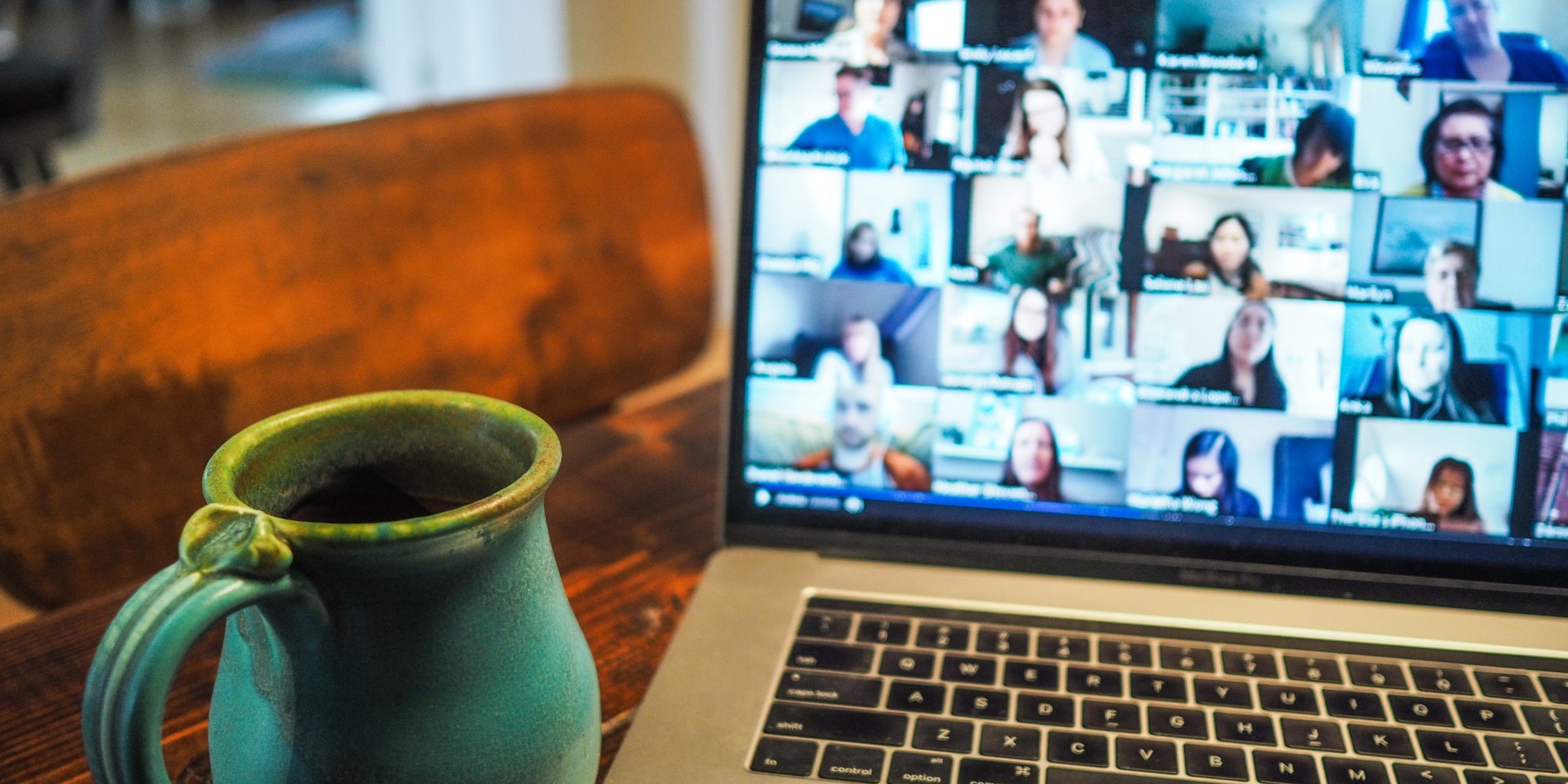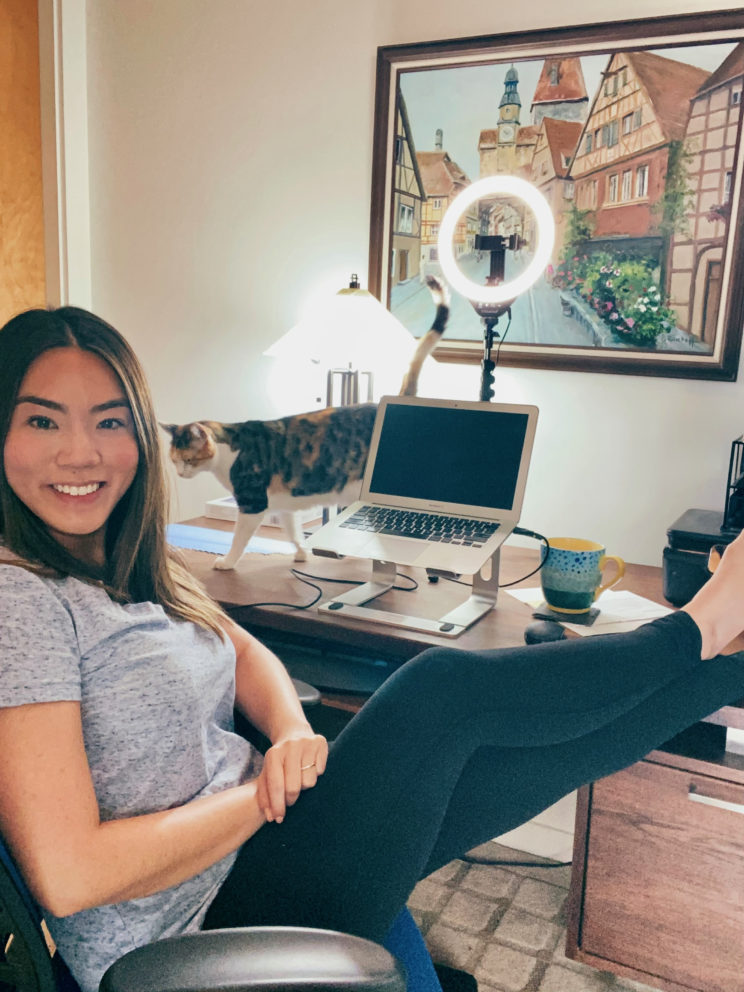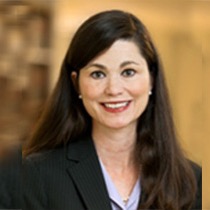
New Habits Die Hard: Lawyers Predict Permanent Post-Pandemic Shifts
Laura Ernde
A year after the world shut down to fight a deadly pandemic, San Francisco lawyers are finally able to start imagining what their practices and lives will look like once we finally emerge from the crisis.
For many, the past 12 months opened the door to new ways of serving clients, networking with colleagues, and conducting court hearings. From our conversations with local lawyers across a number of practice areas, it appears likely that many of these shifts will become permanent.
But which of these new virtual habits will the legal community continue to embrace and which ones will folks be eager to ditch when it’s safe to be together again?
New Ways of Getting Facetime
For starters, let’s look at online networking. Some hope to hold on to the convenience gathering on Zoom or other platforms to share information and best practices, even after the return of in-person events.

Lindsey Mignano, whose four-woman boutique firm represents emerging and small businesses, said she was tapped at least once a month to host webinars with 50 to 100 attendees, giving her unexpected national exposure without having to travel or pay the catering costs that go along with the in-person events she previously hosted in the City.
“In the past, it would have been four hours of my time coordinating,” she said. “Now we just show up (online) for an hour and fifteen minutes. I think that maybe the startup community we network with would also rather have it online because their reach is bigger.”
Mignano credited the Bar Association of San Francisco with the early adoption of virtual networking platforms such as Zoom and Remo, which allows people to “hop from table to table,” striking up video chats with smaller groups of five or less. The latest craze among the young and tech-savvy crowd is presenting Clubhouse, an invitation-only social media conferencing platform, she said.
But she and others said people will likely still want to gather in person, even if the pandemic has made everyone more selective about when and where they travel.
“Online events can be more efficient and less costly, but there is no substitute for human interaction and networking,” said David A. Lowe, who represents employees in litigation.

Gay Crosthwait Grunfeld, the managing partner of Rosen Bien Galvan & Grunfeld, agreed, noting the constraints of Zoom for hosting the 23-person trial and appellate firm’s quarterly luncheons and holiday party.
“I found it very awkward,” she said. “Those kinds of team-building, in-person meetings where we really thought creatively about what we wanted to do and what the case really demanded, I miss those types of interactions.”
Weighing the pros and cons of in-person versus online gets trickier when it comes to dealing with court cases.
Addressing Court Backlogs
Throughout the pandemic, San Francisco Superior Court has remained open for time-sensitive matters. Among the hearings that could not be delayed were criminal arraignments and release hearings, probate court requests for temporary conservatorship, delinquency proceedings, dependency hearings and requests for temporary restraining orders, and gun/domestic violence restraining orders.
But in civil cases, jury trials have been delayed or postponed. With limited in-person hours and a focus on remote hearings to reduce the spread of COVID-19, courts in San Francisco and around the state are now faced with a backlog.
According to a report by the California Judicial Council, San Francisco County Superior Court resolved roughly 13,600 cases between March and August of 2020, as opposed to 57,300 during the same period in 2019, which showed the severe impact of the pandemic.
The state budget provided a one-time $50 million budget infusion to help deal with the backlog. Of that, San Francisco’s share was $1.17 million.
“The biggest challenge will be sorting out the backlog in the courts and getting our cases to jury trials,” Lowe said.
Technology will play a key role in getting courts safely back on target, as many routine matters can be accomplished just as easily online, lawyers and judges predict.
Alameda County Superior Court mandated remote proceedings for all civil cases in early April. Jury trials are also held by video, and Presiding Judge Tara Desautels told lawmakers at a legislative hearing in February that the shift has aided jurors, who can now view evidence and witness testimony on the same screen.
“Users like remote appearances because they are more convenient,” Desautels said at the hearing. “They don’t have to necessarily take time off work or find child care. There’s no need to travel through traffic and fight parking difficulties to make it into a courtroom.” In February, the court launched a mobile app for looking up case information, finding upcoming court dates, and listening to live audio streaming of in-session courtrooms.
At a recent webinar hosted by the Black Women Lawyers Association of Los Angeles and the LA Law Library, California Supreme Court Associate Justices Leondra Kruger and Justice Martin Jenkins predicted that courts will operate differently than they did before, with a menu of technology options to choose from.
“It will have to be contextualized by county to fit certain cultures, with sort of an overarching, grander plan set forth by the chief [justice] and the Judicial Council,” The Recorder quoted him as saying.
The California Supreme Court and appellate courts quickly adapted to holding oral arguments and conferences remotely but have not announced future plans.
“I suspect that there will be continued willingness to allow counsel to appear remotely by video,” appellate lawyer Ben Feuer said. “Whether counsel will need to show good cause, such as travel costs or other hardship, or whether it will be an option in every case without a specific showing of need remains to be seen.”
Remote hearings are especially likely to continue in some form in the 9th U.S. Circuit Court of Appeals, which includes far-flung Hawaii, Alaska, and the Northern Mariana Islands, in addition to seven western states, Feuer said.
Embracing Flexible Working Options
Regular office hours and endless streams of paperwork could be another casualty of the pandemic disruption, as lawyers realized that much of their work could take place remotely and electronically.
Mignano started out working from her kitchen table but transitioned to a home office in July after a water intrusion event at her previous apartment forced her to relocate to a larger two-bedroom a block from the Twitter headquarters.
Throughout the pandemic, Mignano’s law firm has kept their downtown office co-working space, despite only using it for mail and phone reception. Once it’s safe, they plan to book the shared office or conference space for meetings as needed. But now that she has a comfortable work-from-home arrangement, she’s even less likely to need the office space.
Larger firms are beginning to make decisions about when and how to return to the office. The American Lawyer reported that Nixon Peabody could bring folks back as soon as this summer. Other firms, including Ropes & Gray, are aiming for the fall. But many others including Wilson Sonsini Goodrich & Rosati and Willkie Farr & Gallagher foresee remote working for the remainder of 2021.
“The ability to bond with the client, assess credibility, and connect in a human way is much better in person” —David A. Lowe
In a BASF membership survey last year, a majority said they plan to work from home either full- or part-time even after public health orders are lifted.
Samantha Villanueva-Meyer, chief legal officer at mobile retail tech platform Enjoy, said she doesn’t miss spending three hours a day commuting from San Francisco to Palo Alto. But she looks forward to the return of in-person meetings to work through what the business is trying to accomplish and the legal framework to support that effort.
“That’s much more challenging to do when you’re all in Zoomland,” she said. “There’s something different when you’re all in the same room whiteboarding and seeing their passion.”
Lowe said his firm will be more open to flexible schedules and work-from-home arrangements post-pandemic. But for meeting clients for the first time, he plans to ditch Zoom.
“The ability to bond with the client, assess credibility, and connect in a human way is much better in person,” Lowe said.
Lowe said one challenge for law firms coming out of the pandemic will be making sure employees feel safe and comfortable coming to work, including on their commutes if they use public transportation.
Grunfeld has continued to come into her office every day, even while most of the firm’s staff has worked remotely. “We represent approximately 40,000 incarcerated people,” she said, who rely on handwritten letters and phone calls to communicate in the middle of a public health crisis.
Working with such a vulnerable population made her appreciate her own situation and the fact that the firm’s social distancing and cleaning procedures kept her and the other employees safe during the pandemic.
On Jan. 19, the firm joined with the Prison Law Office and ACLU to commemorate those lost during the pandemic. It was held online on the same day as the national memorial, which included the ringing of church bells and lighting of candles around the Lincoln Memorial.
Grunfeld’s firm read the names of 217 clients who died of COVID-19 in state prisons and thought about the countless others who were struggling, including some with disabilities who had to be isolated for their own safety.
“We’ve all been scarred by what’s happened, the devastation and the fear,” Grunfeld said. “Normal may never look the same again.”
Laura Ernde is a San Francisco-based writer and communications consultant. She has covered legal affairs for more than a decade, as a journalist and former editor of the California Bar Journal.
